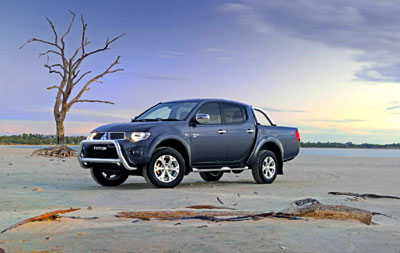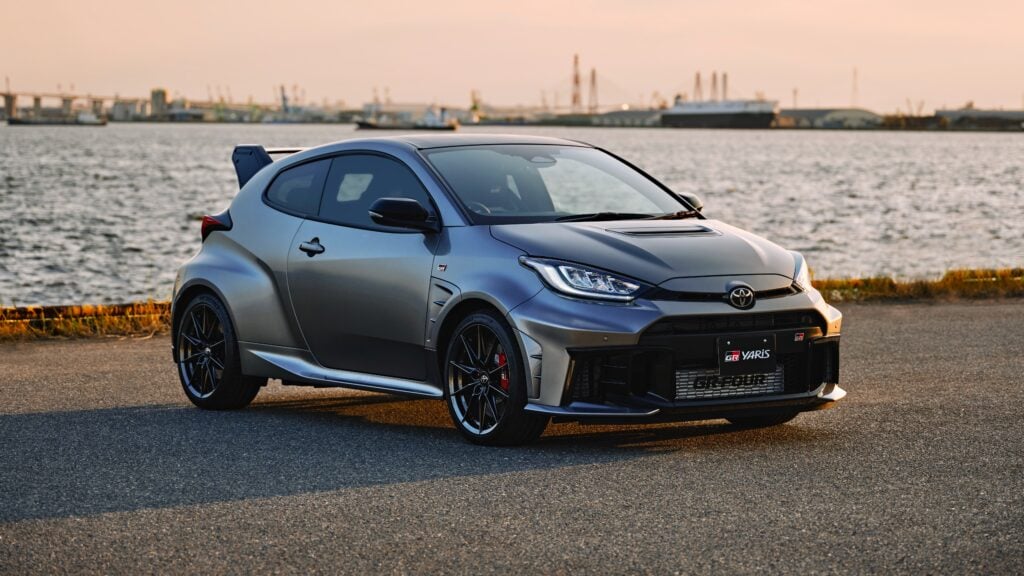Encouraged by the popularity of rival Toyota’s HiLux range, Mitsubishi is now rushing its revamped model year ’10 Triton line-up into showrooms to capitalise on the increased demand for the versatile work-and-play commercials.
With supplies of the ’09 Triton down to the odd vehicle here and there, Mitsubishi has brought forward the introduction of the Triton, which carries a host of changes led by a new high-performance turbo diesel and a longer deeper tray in the double-cab versions.Defying the soft market, Mitsubishi Australia has also reported a return to profit – albeit a small net figure of around a million dollars. That’s an impresive turnaround of $356.5 million in the bottom line.This change in fortunes comes on the back of significant restructuring, reduction of inventory, product line rationalisation and de-proliferation as part of detailed plan to ‘future-proof’ MitsubishiSales in 2008 were 60,692, down 7.2 per cent on 2007. The loss of the locally produced 380 sedan was a factor here.There is cautious optimism from managing director Rob McEniry that that the market can look forward to a slow but steady and sustainable recovery that will be more than a ‘dead-car bouncing’ from the impact of the GFC.Responding to a market that is seeing some ‘green shoots’ (don’t you love this marketing chat?), Mitsubishi is freeing up production and increasing sales forecasts.June brought the best ever sales month for Triton, and there is some more good product news in the offing.The 2010 Triton is an important model for Mitsubishi, accounting for 30 per cent of total sales.There is evidence that the Triton has been pulling passenger car buyers who see advantages in its versatility, reliability and toughness (if not fuel thriftiness).The Mitsubishi execs are ever candid and marketing chief Paul Unerkov admits that while the Trion’s looks have brought attention to the product, they are also polarising.Changes to the ’10 Triton include the dropping of the V6 from the 4 x 4 line-up, increased towing capacity, and to sate the needs of work/play sports ute buyers, the introduction of a mid-range GL-R variant in both two- and four-wheel drive.Exterior styling has been tweaked, along with new trim and more comfortable seats.The new 2.5-litre turbodiesel offers up 131kW and 400Nm – a jump of 11 per cent and 17 per cent respectively over the previous 4M41 3.2-litre engine. Combined fuel economy figure of 8.3 litres per 100 km (a 9 per cent improvement when mated to a manual transmission). Automatic variants generate a similar amount of power, 350Nm of torque, and achieve a combined fuel economy figure of 9.3 litres per 100 km.The two-wheel drive ’10 Triton retains the 94kW /194Nm 2.4-litre petrol engine and 100kW/314Nm 2.5-litre diesel engine from the current line-up.All 2010 Tritons have standard driver and front passenger airbags, front and rear door impact bars, ABS with electronic brakeforce distribution, front seatbelt pretensioners and child restraint points.Active stability and traction control is available on all HP diesel models and passenger side and curtain airbags are available on all HP diesel dual-cab models – and standard on GLX-R variants.The longer tray available on dual-cab Tritons offers a total tray length of 1505 mm, and total tray height of 460 mm – an improvement in both directions of 14 per cent.The 2010 Triton line-up has a five year/130,000km whole vehicle warranty, backed up by its 10 year/160,000 km powertrain warranty and a five year/unlimited kilometre roadside assistance package.Prices haven’t yet been revealed but we are assured there will be no sticker shock.Still in the rough stuff, the all-new Challenger, a genuine off roader with a turbo diesel engine and low range, will open more opportunities for its increasingly satisfied dealers, McEniry suggests. “Should give some of our softer competitors a shake,” Big Mac declared.As it emerges from dark days, Mitsubishi is getting back on the front foot on the eco front too.McEniry says it will have a few of the new plug-in i-MiEV electric cars here by the year’s end.Initially the i-MiEV, the first electric vehicle to get full compliance in Australia, will go to people who Mitsubishi describes as ‘good disciples’ of the concept who would promote the new technologies. IT groups for example.Demand will exceed supply, Mitsubishi says.Touted as the ultimate eco-car, a solution to the various challenges the automobile faces today including environmental pollution, global warming and the depletion of petroleum-based energy supplies, the i-MiEV has a range of 140km, more than enough for the daily commuting needs of most city drivers.It can be recharged overnight in a family garage equipped with 15 amp power.Mitsubishi Motors expects to distribute, on a maintenance lease basis, some 1,400 i-MiEV models in 2009 principally to corporations and to local government. A maintenance lease is a lease in which the monthly payments include some of the taxes, insurance and maintenance costs.





